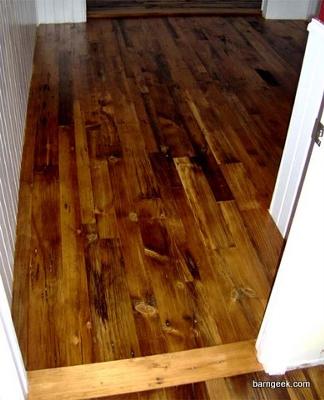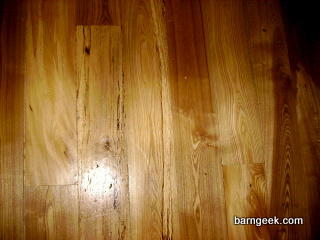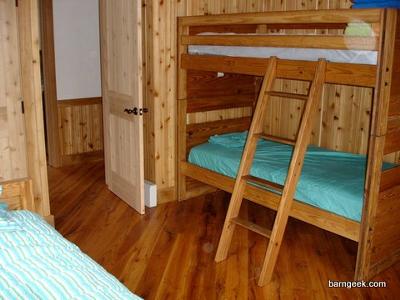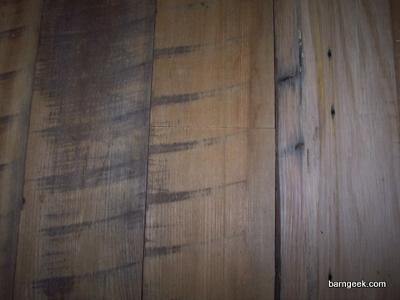



Have you ever taken reclaimed hand-hewed beams and turned them into hardwood flooring?
I am looking for information regarding this. In particular, I am trying to determine if this was done, would:
1) it be necessary to kiln dry the planks before installing the flooring?
2) and would it be necessary to mill the sawed planks as tongue and groove to prevent cupping?
If you have any insight on this, I would be very interested in learning.

Yes we have made flooring from reclaimed timbers and planks.
Hardwood reclaimed from a barn has air dried to about 10-12% moisture content. Some believe that the wood should be kiln dried to 6-8%.
While others think that the air dried wood is far more stable than anything out of a kiln.
To put this in context the standard 2×4 you get from a lumber yard is dried to 18%. The cabinets and furniture in your home is kiln dried to 6-8%.
You have to keep in mind that wood is like a sponge. It soaks up the moisture in the air and acclimates to its environment.
The theory with kiln drying is that it collapses the cells in the wood (holes in a sponge) so that the wood doesn’t acquire to much moisture.
Personally I don’t believe this makes all that much difference. Wood expands when it draws moisture and contracts when it dries out, just like a sponge.
No matter how dry your sponge gets you can always get it to soak up water.
In your home you have a controlled environment. In the winter when you heat your home the air dries out and therefore your hardwood floor dries out and it shrinks.
In the spring and summer the air in your home is more like the air outside and the hardwood soaks up that moisture and expands.
Boards shrink more on their width than on their length.
The wider the board the more it shrinks.
Our grandfathers discovered this many years ago, that is why when you see old hardwood flooring it is usually 1 1/2 to 2 inches wide. These days though most people want wide plank flooring and they don?t want it to move.
Well, this is simply not possible. If you want wide plank flooring then you will have to live with the cracks that show up.
These cracks can be as large as 1/4 inch! Which is a real toe grabber!
Tongue and groove can prevent cupping to a point. Once again the wider the board the more prone to cupping it is.
It is another moisture issue.
If you want wide plank stay in the 4-6 inch wide range cracks will only be 1/16 to 1/8 inch.
Most importantly install your flooring in the winter!
Leave a 1/4 inch gap along the wall for expansion. Then when the wood expands in the summer it has somewhere to go.
Next winter it will shrink back to where it was when you installed it.
If you get your flooring delivered and installed in the summer even if it is kiln dried, by the time it gets to your house it will have already acclimated a bunch of moisture.
Then it sits in your home and just soaks up the moisture until it is installed. When winter arrives and your furnace kicks on you will wake up to some toe catching gaps in your floor!